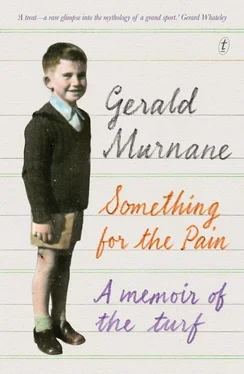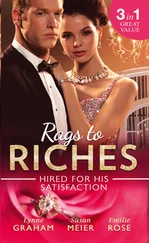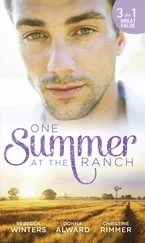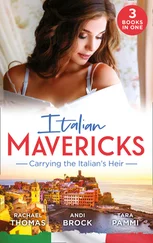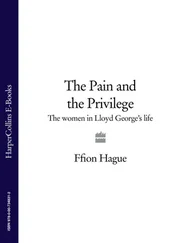What seems most remarkable about Teddy as I recall him today, three or four decades after his death, is that he was never observed to engage in any sort of paid employment. Put plainly, he never had a job, a position, a calling. My father said sometimes that Teddy lived by his wits. I wonder how Teddy described his occupation on his taxation returns, assuming that he bothered to submit them. The expression professional punter was not much used in the years when Teddy was most active. Persons describing themselves thus in recent decades have mostly turned out to be launderers of money gained from other sources. No such suspicion was ever attached to Teddy. In the absence of any evidence to the contrary, I’m obliged to report that Teddy Ettershank was the only man I ever met who supported himself wholly by betting on racehorses.
When I first heard of Teddy, he was a widower and aged probably in his forties. He owned a comfortable house in the Travancore estate, in what was then the better part of Ascot Vale and not far from Flemington racecourse. He lived with his mother and Gerald, his only child. Teddy always drove a near-new car. He sent his son to Melbourne Grammar and later to university. When Teddy was in his fifties, so I heard afterwards, he married a much younger woman and became the father of at least two more children. To the best of my knowledge, he financed all this from the proceeds of his betting.
My father, as I wrote earlier, called Teddy his best friend, but even as a boy I saw that the two men were not equals: my father was more like a client or even a hanger-on. My father visited Teddy often and phoned him even more often. I can’t recall my father’s receiving any phone calls from Teddy, and I suspect that Teddy’s one visit to our house, in 1950, when we lived in Pascoe Vale, was for the purpose of taking my father in haste to Geraldo’s stable, there to pose as the horse’s true owner and so to avert some possible crisis with officialdom. Teddy’s information certainly helped my father to collect some lucrative bets. On the evening of Geraldo’s win at Cranbourne, I saw my father counting out a share of his winnings to my mother in their bedroom — the bedspread was covered with brick-red ten-pound notes, each of them worth much more than five hundred dollars today. In 1956, after my father had had to sell our house to pay his gambling debts, he won the deposit on another house by backing one of Teddy’s tips in a race at Mornington. (The horse was named Valley Vista — Pale-green and purple hoops — and had poor form, and yet it won easily at short odds, causing my father to suspect, and to whisper to me under pain of secrecy, that Teddy had organised, or had at least been privy to, an old-fashioned ring-in.) It may well be true, and my father sometimes ruefully postulated it, that if he had never followed his own opinions when betting but had backed only Teddy’s recommended horses, he would have had a successful career as a punter, but this is to suggest that Teddy was more open and more benevolent than he actually was.
Towards the end of Tamarisk Row , Augustine Killeaton has one last, desperate bet and loses. As a result, he has to flee from the city of Bassett and the bookmakers that he has no hope of paying. He makes his ruinous bet after receiving some incomplete information from the man that he calls the Master, Lenny Goodchild, in faraway Melbourne. Augustine is too ashamed to contact Goodchild afterwards, and the next week the horse that ruined him lands a massive plunge, as a racing writer would put it. Augustine is more distressed to have been left out of Goodchild’s operation than to have missed out on winning enough to settle his debts. Nothing so dramatic ever happened between my father and Teddy. I even recall Teddy’s visiting my father in hospital on the day before he died unexpectedly. And yet I had in mind while I invented my fictional goings-on a few occasions when my father seemed on the point of admitting that Teddy sometimes kept from him things that my father deserved to be told and one occasion when my father was telling me about the disappointing career of my namesake in the years before my birth. He recalled a day when Gerald had run unplaced at Moonee Valley. My father had backed the horse heavily and he wondered aloud in my hearing whether Teddy had arranged that day to have the horse beaten and had absentmindedly, or even deliberately, not told my father.
I called this section after two horses linked to me by name. When I planned the section, I intended to end it with the information that both horses, Gerald and Geraldo, were sold in mid-career and afterwards did surprisingly well for their new owners and trainers. Gerald won a number of races in Western Australia and Geraldo in the Wangaratta district of Victoria. I was going to speculate that I was somewhat like my horsey namesakes, in that I performed better after having got away from the influence of my father. Even his early death played into my hands. How could I have written Tamarisk Row while he was still alive?
Yes, I named this section after two horses, but it was taken over, you might say, by the man who secretly owned the horses and had such a powerful influence on my father. I don’t think often nowadays about my father but, whenever I do, I think also about Teddy Ettershank, who could probably be said to have been my father’s hero. Or, rather, I think about a man named Ettershank who might be Teddy himself but is more likely Teddy’s father or even grandfather. My father once told me that Teddy’s forebears had been racing men from around Flemington for several generations. Ettershank, the image-man in my mind, always appears to me as though he stands in close conversation with another image-man on the day in September when the first north wind blows from the inland across Melbourne and then across the bay and out into Bass Strait. The connotations are obvious to me. Spring and early warm weather in Melbourne are linked with the Spring Racing Carnival, perhaps the greatest racing carnival in the world, as European trainers and owners have only recently learned to their surprise, and the first north wind reminds persons such as myself that another Spring Carnival is in the offing.
Little survives today of what I call Old Flemington but, as recently as thirty years ago, I could drive from Epsom Road along Sandown Road towards Ascot Vale Road on my way home from a meeting at Flemington racecourse and could call to mind easily how the area must have been during the Great Age of Racing, which began eighty years before my birth and ended twenty years after it. Nearly every house in Sandown Road had behind it a paved stable yard and half a dozen loose boxes with a feed loft above them. In the decades when motorcars were rarities, the streets in the early morning darkness echoed with the clatter of horseshoes on bitumen as hundreds of horses walked from their stables in streets all around to be exercised at Flemington racecourse. Generations of Ettershanks would have been up and active before dawn, but my defining scene takes place in early afternoon during the few hours when racing men (they were always men in those days) had some brief, precious leisure time before the horses in their care required their afternoon exercise. My defining scene takes place against a background of pepper trees, probably because the old Newmarket sale yards were lined with such trees and a few still stand in the now-fashionable quarter of Kensington that was established after the closure of the yards. The warm north wind agitates the dense green foliage of the pepper trees in some shabby street near Flemington racecourse, and the same wind overlays all of my defining scene with a golden mist.
We think of air pollution as something relatively new, but a woman of my mother’s age told me once that when she worked as a young shop assistant in Melbourne in the 1930s the streets of the city were always spattered with horse dung. In cold or rainy weather, the stuff lay moist where it had fallen. In hot weather, it soon dried, and when the north wind blew in spring and summer the air above the streets was thick with particles of yellow chaff flung up from the desiccated dung. The same yellow haze swirls around my mythical Ettershank and his nameless companion while they stand beneath the waving pepper trees somewhere in Old Flemington on a spring afternoon long before my birth and while they devise together a plot against the bookmakers. I hear nothing of what passes between mythical-Ettershank and his mate but I hear a paraphrase of a passage I last read as a schoolboy. I hear Macbeth’s declaring that terrible things were done in the olden time.
Читать дальше
